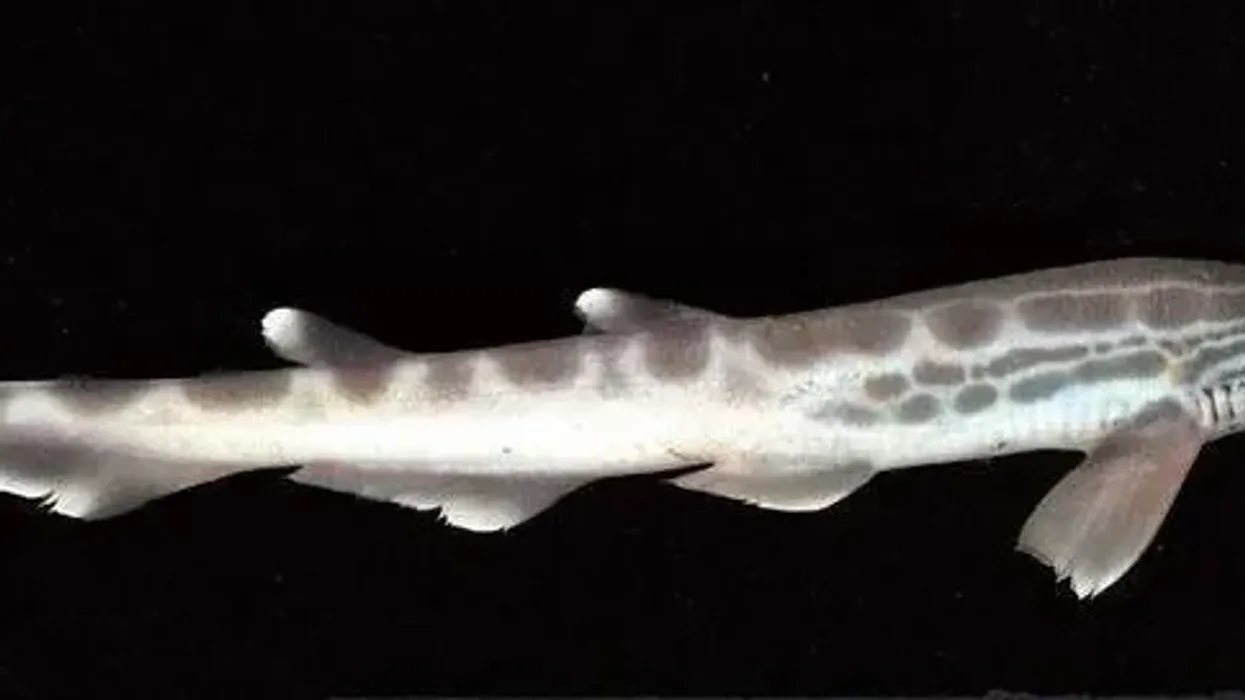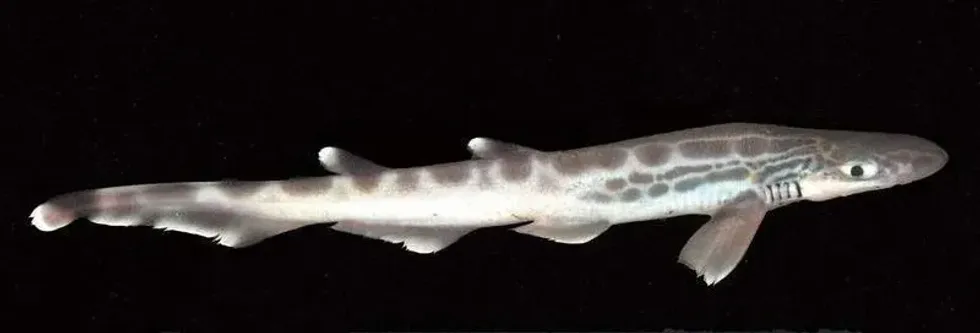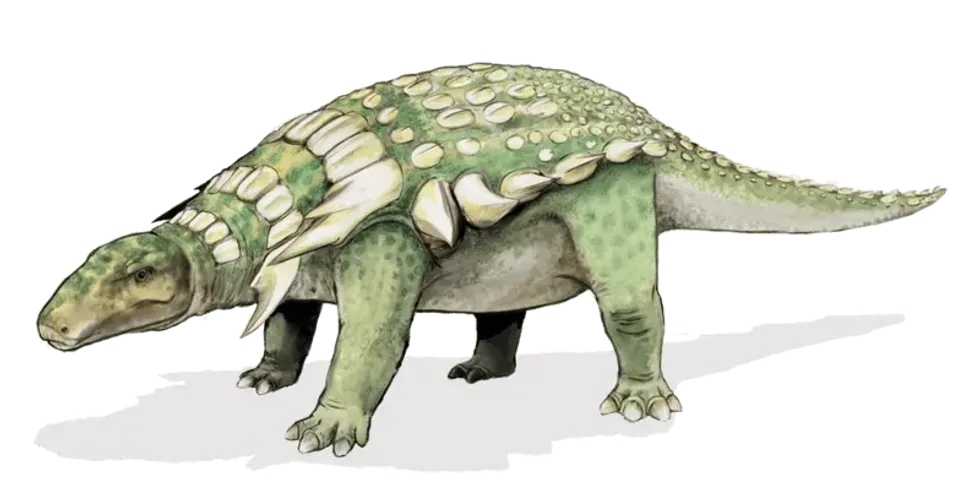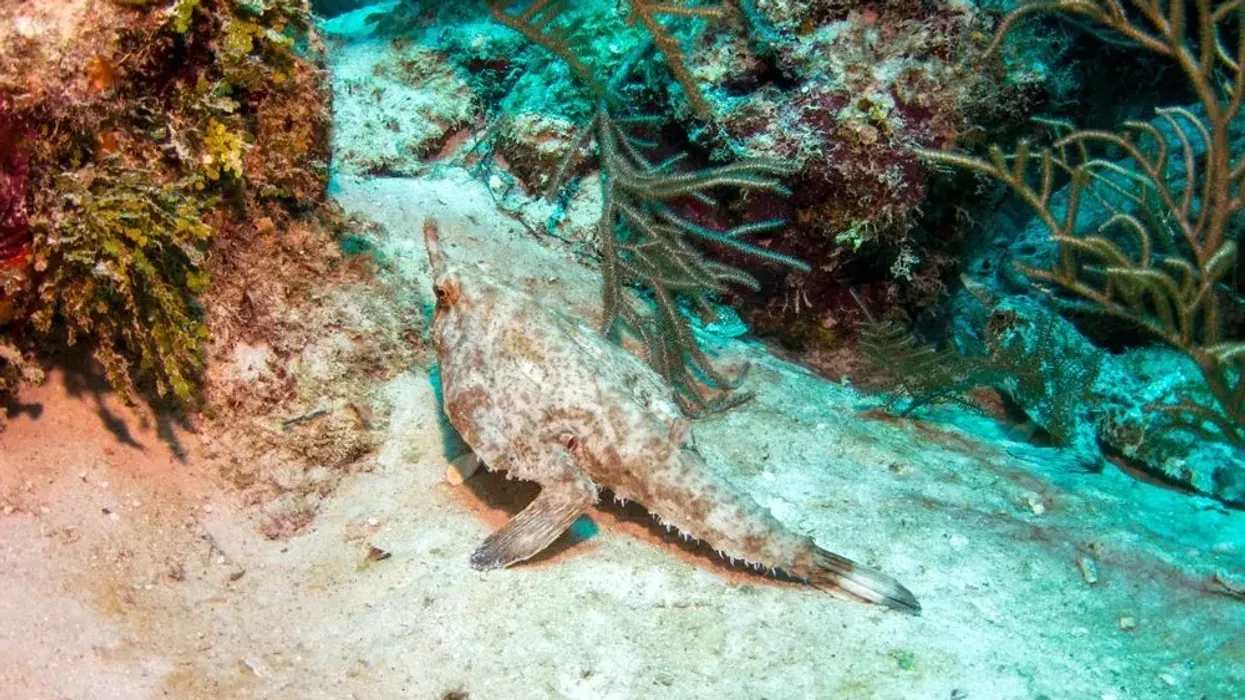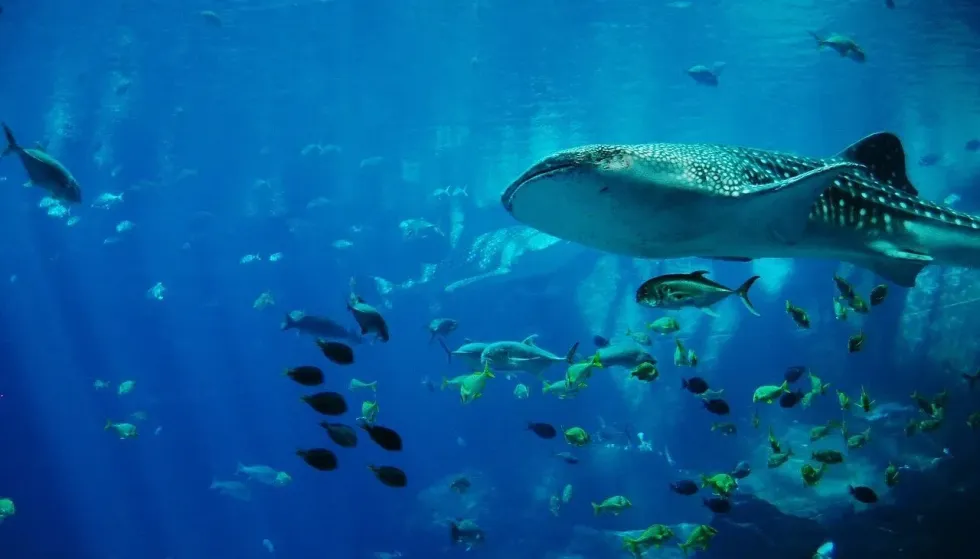The blackmouth catshark is a member of the catshark species that come from the family of Scyliorhinidae. They are found in the deep waters of the Atlantic Ocean.
Like their other relatives, these animals are predatory by nature. They are really beautiful to look at with a rather chic pattern on their back to the end of their tail.
The blackmouth catshark (Galeus melastomus) is quite skilled when it comes to preying for food. This fish has really good eyesight and electroreceptive systems that enable them to spot the slightest movement that occurs around them. Their eyes are trained to detect any bioluminescent prey around them.
Unlike other sharks that primarily use the sense of smell, these animals use other characteristics to fill their bellies. They might prey on aquatic animals together with other blackmouth catsharks.
If you are really into sharks and would like to know more about them, check out our articles about the home shark and zebra shark.
Blackmouth Catshark Interesting Facts
What type of animal is a blackmouth catshark?
Just like a shark, these catsharks are predators found in deep waters of the Atlantic Ocean as well as the Adriatic and Aegean Seas. They are generalists and feed on pretty much anything available around them. The blackmouth catshark (Galeus melastomus) is a species of catsharks and is quite large in size.
What class of animal does a blackmouth catshark belong to?
The blackmouth catshark comes from the family of Scyliorhinidae and belongs to the class of Chondrichthyes. This class is also known as the class of Cartilaginous fishes. Found in deep water, this shark species is considered to be of Least Concern when it comes to their conservation status.
How many blackmouth catsharks are there in the world?
The exact population of the blackmouth catshark (Galeus melastomus) is not known. However, this shark species has a stable population trend and is considered to be of Least Concern on the IUCN Red List.
Where does a blackmouth catshark live?
These amusing catsharks are commonly found in Iceland to Senegal as well as the Mediterranean Sea. This species is found in a depth range of 490–4,590 ft (150–1,400 m) in the continental slope region as well as along muddy bottoms.
Blackmouth catsharks are slow swimmers and stay near the water bed to save their energy. They prefer to stay at the bottom and this species tends to be motionless and simply stays in one place.
What is a blackmouth catshark's habitat?
This species of catshark prefers deep waters and is often found in waters with a depth range of 490–4,590 ft (150–1,400 m). Like other sharks, these catsharks are predatory and will eat almost anything around them. Blackmouth catsharks may even feed on other sharks and rays.
Who does the blackmouth catshark live with?
Nomadic blackmouth catsharks can be found living alone or with groups. There are over 160 species of sharks in the family of catsharks.
How long does a blackmouth catshark live?
On average the lifespan of catsharks is 12-13 years. However, the exact life span of this species is not known. Fortunately, the conservation status of this species is Least Concern.
How do they reproduce?
This species is oviparous and produces batches of two to eight eggs. At times, blackmouth catsharks may lay 13 egg cases. The characteristic of egg-laying batches is common across all shark species.
These sharks reproduce all year but in high amounts during winter and summer. The egg cases are deposited on the muddy bottoms of the ocean. This shark species egg case has upper horns and is dark brown in color.
What is their conservation status?
The conservation status for this species of sharks is labeled as Least Concern.
Blackmouth Catshark Fun Facts
What does the blackmouth catshark look like?
This species has a brownish-gray-colored skin with 15-16 saddles along its back and tail. They have long slim bodies that are the size of a child's baseball bat.
The tips of its dorsal fins and caudal fins are white, adding a great contrast to its color as well the saddles on its body. The two dorsal fins equal in length can be seen placed at two points, one at the midpoint of its pelvic fins and one at the midpoint of its caudal fins.
The anal fin is much larger than the dorsal fins and takes up almost 13–18% of the total body length. This species has a snout and a rather broad mouth which is jet black on the side.
69-79 teeth are seen in the upper and lower jaw. The snout takes up around 6-9% of its total length.
How cute are they?
This species is rather aesthetic to look at. The white blotches over the back add definition to their appearance and amuse the viewer. These sharks however are predatory by nature.
How do they communicate?
This species of catsharks are not as big on communication compared to other sharks.
How big is a blackmouth catshark?
The length of this catshark is 20-31 in (50-79 cm). They are quite small in size compared to sharks we see in movies. The total length of these sharks varies from habitat to habitat. The length of 20-25 in (50- 63.5 cm) is seen for the Mediterranean shark and 26-31 in (66-79 cm) is seen for the Atlantic shark.
How fast can a blackmouth catshark swim?
Unlike the apex predator shark, these fishes don't swim very fast, in fact, they prefer to swim slowly and are seen near the water beds to conserve energy.
How much does a blackmouth catshark weigh?
Catsharks are not as heavy compared to other species. The maximum weight of this species was seen to be around 3.1 lb (1.4 kg). Females tend to be heavier compared to males.
What are the male and female names of the species?
No specific name has been assigned to male and female catsharks of this species. They both are referred to as catsharks.
What would you call a baby blackmouth catshark?
There is no specific name that is assigned to the offspring of the blackmouth catshark.
What do they eat?
This small predator is not picky when it comes to food. They will feed on bottom-dwelling aquatic animals as well as other free-swimming organisms.
The adult blackmouth catshark may even feed on large fishes and has been observed to hunt animals as big as sharks and rays and other larger fishes from the same species. These fishes are known to hunt together.
However, the diet of this small shark is defined by decapods, bony fishes such as lanternfishes, little dragonfishes, bristlemouths, moras, and cephalopods.
Their diet is dependent on food availability and therefore sometimes when the above-mentioned options are not available they may even feed on crustaceans, shrimps, and prawns. To hunt, these fishes move their heads side to side to use their senses efficiently.
Are they aggressive?
No, this species of blackmouth catshark (Galeus melastomus) are not known to be aggressive. They are harmless to humans.
Would they make a good pet?
Blackmouth catshark (Galeus melastomus) fish are wild animals that are not meant to be domesticated. These fishes have a demanding diet for one and need to live in deep waters that no tank at home will provide. Also since their diet is very vast, at-home food or any other fish food would not suffice this shark's appetite.
Did you know...
In 2019, fishers near the Mediterranean Sea in Italy, accidentally pulled a mutant from the depths. Once the researchers examined the mutant, they realized it was a blackmouth catshark.
They almost mistook it for an 'alien' as the fish had no external skin. Researchers had never seen an aquatic animal of that sort. The blackmouth catshark (Galeus melastomus) found was a young female and her age was approximately about three years old.
The size of this naked fish came up to about 1 ft (30.48 cm) long. The fish lacked teeth as well.
The sight was rather astounding to come across even though albinism was common in aquatic animals. The skin-less catshark had a belly full of food when it was found. It is not uncommon to find a mutant species, but to think that a catshark can exist without its skin is just mind-blowing!
Their eyes are trained to detect any bioluminescent prey around them. Unlike other sharks that primarily use the sense of smell, these animals use such characteristics to fill their bellies.
The spotted catshark is the largest catshark. Another interesting catshark is the false catshark.
How did the blackmouth catshark get its name?
The name, blackmouth catshark, is inspired by its small, wide arched mouth that is pitch black from the inside. They have 69-79 teeth in their upper and lower jaw through that they use to prey on other aquatic animals found in deep waters.
How is it different from other sharks?
The most distinctive feature of the blackmouth catshark (Galeus melastomus) is its aesthetic pattern. It has a brownish-gray colored skin with around 15-16 white blotches adding a form of definition. Its long slender body is no bigger than your childhood baseball bat.
The underside of its body is fairly bright in color compared to the rest of its body. Their dorsal fins and caudal fins are colored white at the tips. In a sense, you could say, for a scary catshark, this animal is quite beautiful.
Unlike other sharks that rely primarily on their sense of smell, this catshark mainly uses its sense of vision and electroreception to prey for food. Their horizontal oval-shaped eyes are extremely good at detecting any bioluminescent activity.
The blackmouth catshark (Galeus melastomus) is unique in its own way. It's a good thing that this species conservation status is at Least Concern.
Here at Kidadl, we have carefully created lots of interesting family-friendly animal facts for everyone to discover! Learn more about some other fish from our hammerhead shark facts and great white shark facts pages.
You can even occupy yourself at home by coloring in one of our free printable rainbow shark coloring pages.

